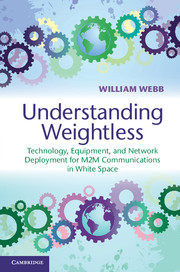Refine search
Actions for selected content:
48229 results in Computer Science
6 - Landmark-based shape spaces
-
- Book:
- Nonparametric Inference on Manifolds
- Published online:
- 05 May 2012
- Print publication:
- 05 April 2012, pp 77-81
-
- Chapter
- Export citation
11 - Affine shape spaces A??km
-
- Book:
- Nonparametric Inference on Manifolds
- Published online:
- 05 May 2012
- Print publication:
- 05 April 2012, pp 135-146
-
- Chapter
- Export citation
5 - Intrinsic analysis on manifolds
-
- Book:
- Nonparametric Inference on Manifolds
- Published online:
- 05 May 2012
- Print publication:
- 05 April 2012, pp 57-76
-
- Chapter
- Export citation
References
-
- Book:
- Nonparametric Inference on Manifolds
- Published online:
- 05 May 2012
- Print publication:
- 05 April 2012, pp 229-234
-
- Chapter
- Export citation
1 - Introduction
-
- Book:
- Nonparametric Inference on Manifolds
- Published online:
- 05 May 2012
- Print publication:
- 05 April 2012, pp 1-7
-
- Chapter
- Export citation
Frontmatter
-
- Book:
- Nonparametric Inference on Manifolds
- Published online:
- 05 May 2012
- Print publication:
- 05 April 2012, pp i-iv
-
- Chapter
- Export citation
14 - Nonparametric Bayes regression, classification and hypothesis testing on manifolds
-
- Book:
- Nonparametric Inference on Manifolds
- Published online:
- 05 May 2012
- Print publication:
- 05 April 2012, pp 182-208
-
- Chapter
- Export citation
3 - Location and spread on metric spaces
-
- Book:
- Nonparametric Inference on Manifolds
- Published online:
- 05 May 2012
- Print publication:
- 05 April 2012, pp 21-35
-
- Chapter
- Export citation
Appendix C - Dirichlet processes
-
- Book:
- Nonparametric Inference on Manifolds
- Published online:
- 05 May 2012
- Print publication:
- 05 April 2012, pp 218-225
-
- Chapter
- Export citation

Understanding Weightless
- Technology, Equipment, and Network Deployment for M2M Communications in White Space
-
- Published online:
- 05 April 2012
- Print publication:
- 22 March 2012
4 - Extrinsic analysis on manifolds
-
- Book:
- Nonparametric Inference on Manifolds
- Published online:
- 05 May 2012
- Print publication:
- 05 April 2012, pp 36-56
-
- Chapter
- Export citation
10 - Stiefel manifolds Vk,m
-
- Book:
- Nonparametric Inference on Manifolds
- Published online:
- 05 May 2012
- Print publication:
- 05 April 2012, pp 130-134
-
- Chapter
- Export citation
Appendix A - Differentiable manifolds
-
- Book:
- Nonparametric Inference on Manifolds
- Published online:
- 05 May 2012
- Print publication:
- 05 April 2012, pp 209-214
-
- Chapter
- Export citation
Contents
-
- Book:
- Nonparametric Inference on Manifolds
- Published online:
- 05 May 2012
- Print publication:
- 05 April 2012, pp v-viii
-
- Chapter
- Export citation
Appendix B - Riemannian manifolds
-
- Book:
- Nonparametric Inference on Manifolds
- Published online:
- 05 May 2012
- Print publication:
- 05 April 2012, pp 214-218
-
- Chapter
- Export citation
Index
-
- Book:
- Nonparametric Inference on Manifolds
- Published online:
- 05 May 2012
- Print publication:
- 05 April 2012, pp 235-237
-
- Chapter
- Export citation
8 - The planar shape space ??k2
-
- Book:
- Nonparametric Inference on Manifolds
- Published online:
- 05 May 2012
- Print publication:
- 05 April 2012, pp 87-109
-
- Chapter
- Export citation
CUT FOR CORE LOGIC
-
- Journal:
- The Review of Symbolic Logic / Volume 5 / Issue 3 / September 2012
- Published online by Cambridge University Press:
- 02 April 2012, pp. 450-479
- Print publication:
- September 2012
-
- Article
- Export citation
TRACTARIAN FIRST-ORDER LOGIC: IDENTITY AND THE N-OPERATOR
-
- Journal:
- The Review of Symbolic Logic / Volume 5 / Issue 4 / December 2012
- Published online by Cambridge University Press:
- 02 April 2012, pp. 538-573
- Print publication:
- December 2012
-
- Article
- Export citation
